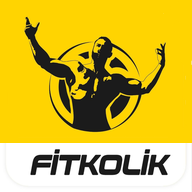The pursuit of peak performance and an aesthetically perfect physique often leads athletes and bodybuilders down the path of using anabolic-androgenic steroids (AAS). While these drugs can yield dramatic gains in muscle mass and strength during a cycle, the period immediately following cessation—known as Post-Cycle Therapy (PCT)—is universally associated with a worrying phenomenon: the Post-Cycle Drop or significant loss of muscle volume.
The Mechanism of Muscle Volume Loss
The muscle loss experienced after an anabolic steroid cycle is a complex biological event, and critically, it's often more about volume than a catastrophic loss of actual muscle tissue (myofibrils).
1. Hormonal Imbalance and HPTA Shutdown
The core reason for the drop lies in the body's attempt to restore hormonal homeostasis. During an anabolic cycle, the high concentration of exogenous (external) testosterone and other anabolic agents is perceived by the brain's Hypothalamic-Pituitary-Testicular Axis (HPTA) as excessive. This leads to a protective shutdown: the hypothalamus stops releasing Gonadotropin-Releasing Hormone (GnRH), which in turn stops the pituitary gland from releasing Luteinizing Hormone (LH) and Follicle-Stimulating Hormone (FSH).
-
The Result: The testes cease their natural production of testosterone, leading to testicular atrophy (the gradual shrinking of the testes) and a sharp, often prolonged, drop in endogenous testosterone levels after the external supply is cut off. Restoring the HPTA function is the primary, challenging goal of PCT.
2. Loss of Non-Contractile Volume
The initial, rapid decrease in size is predominantly due to the loss of elements that provide the "fullness" of the muscle, not the destruction of the contractile protein structure itself.
-
Glycogen and Water Depletion: Anabolic hormones promote increased storage of intracellular glycogen and water within muscle cells. When the steroid supply is terminated, the muscle loses this super-hydration and glycogen capacity, causing a rapid deflation. The muscle appears smaller and flatter, but the actual myofilaments remain intact. This is why the volume drop is sometimes compared to taking the foot off the accelerator—the engine (muscle) is still there, but the hormonal fuel is cut.
3. Metabolic Shift and Catabolism
Without the potent anabolic signals of the steroids, the body shifts into a more catabolic (muscle-wasting) state.
-
Slower Protein Synthesis: The rate of new protein construction drastically slows down.
-
Stress Hormones: The relative decrease in anabolic hormones (like testosterone and IGF-1) combined with the potential rise in the stress hormone Cortisol tips the scale toward catabolism. Cortisol is a powerful glucocorticoid that breaks down muscle tissue for energy.
The Critical Role of Post-Cycle Therapy (PCT)
For athletes, managing the post-cycle phase is as vital as the cycle itself. It's a two-pronged strategy focusing on hormonal recovery and health assessment.
1. Hormonal Recovery
The aim is to reactivate the HPTA as quickly and efficiently as possible to minimize the period of low natural testosterone. This often involves specific prescription medications designed to stimulate LH and FSH release. Without a meticulous and well-researched PCT protocol, the body can remain in a state of severe hormonal imbalance for months, leading to significant muscle loss and potential long-term health issues. The safe return requires the methodical "re-ignition of the motor."
2. Comprehensive Health Monitoring
Anabolic steroid use places considerable stress on several organ systems. The PCT phase is crucial for assessing and mitigating these side effects. Athletes must monitor:
-
Blood Lipid Profile: Steroids often negatively impact cholesterol (raising LDL and lowering HDL).
-
Liver Function: Oral steroids, in particular, can strain the liver.
-
Hematocrit/Blood Viscosity: Steroids can increase red blood cell count, raising the risk of blood clots.
-
Blood Pressure: Hypertension is a common side effect that needs management.
A successful post-cycle phase requires a commitment to a high-protein diet and sufficient, high-quality sleep to help control cortisol and maintain remaining muscle mass. For any athlete considering or coming off a cycle, the emphasis must shift from purely aesthetic goals to the precise science of hormone and organ function recovery.

